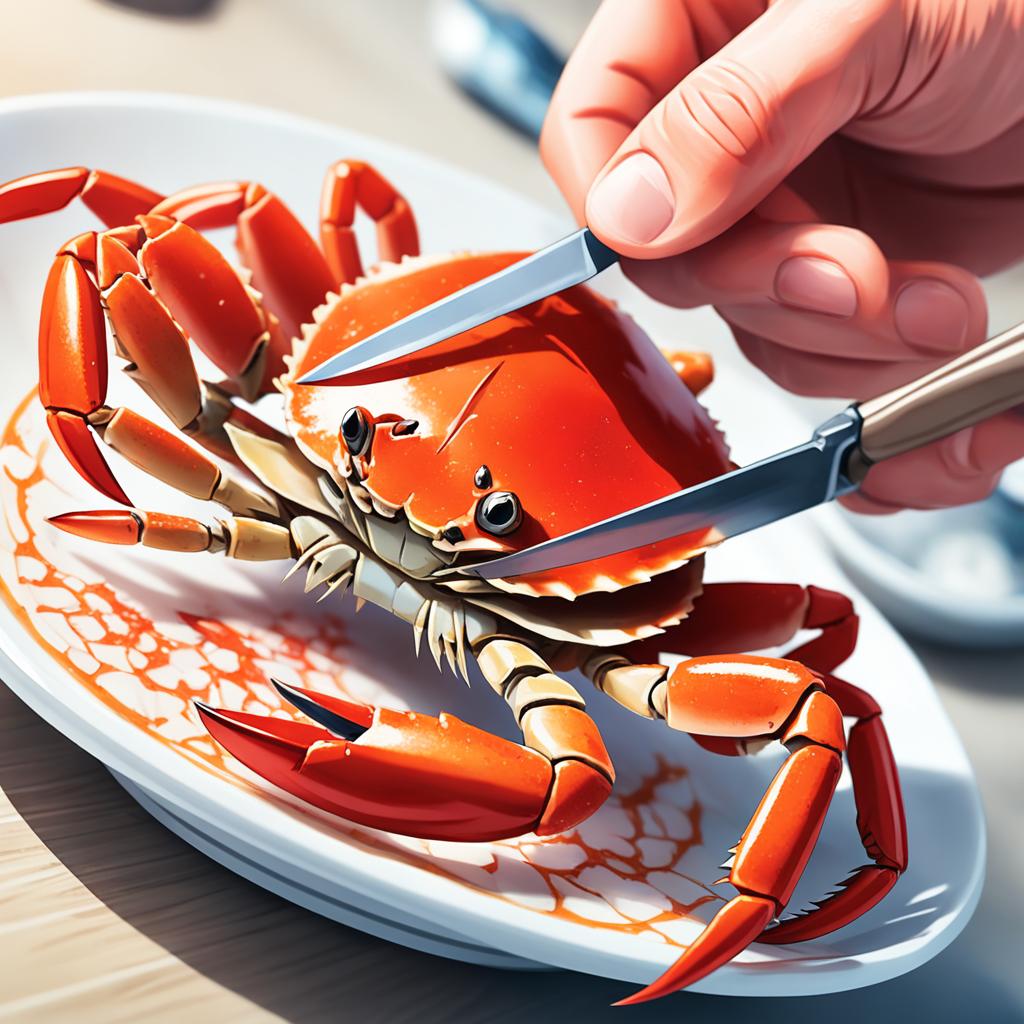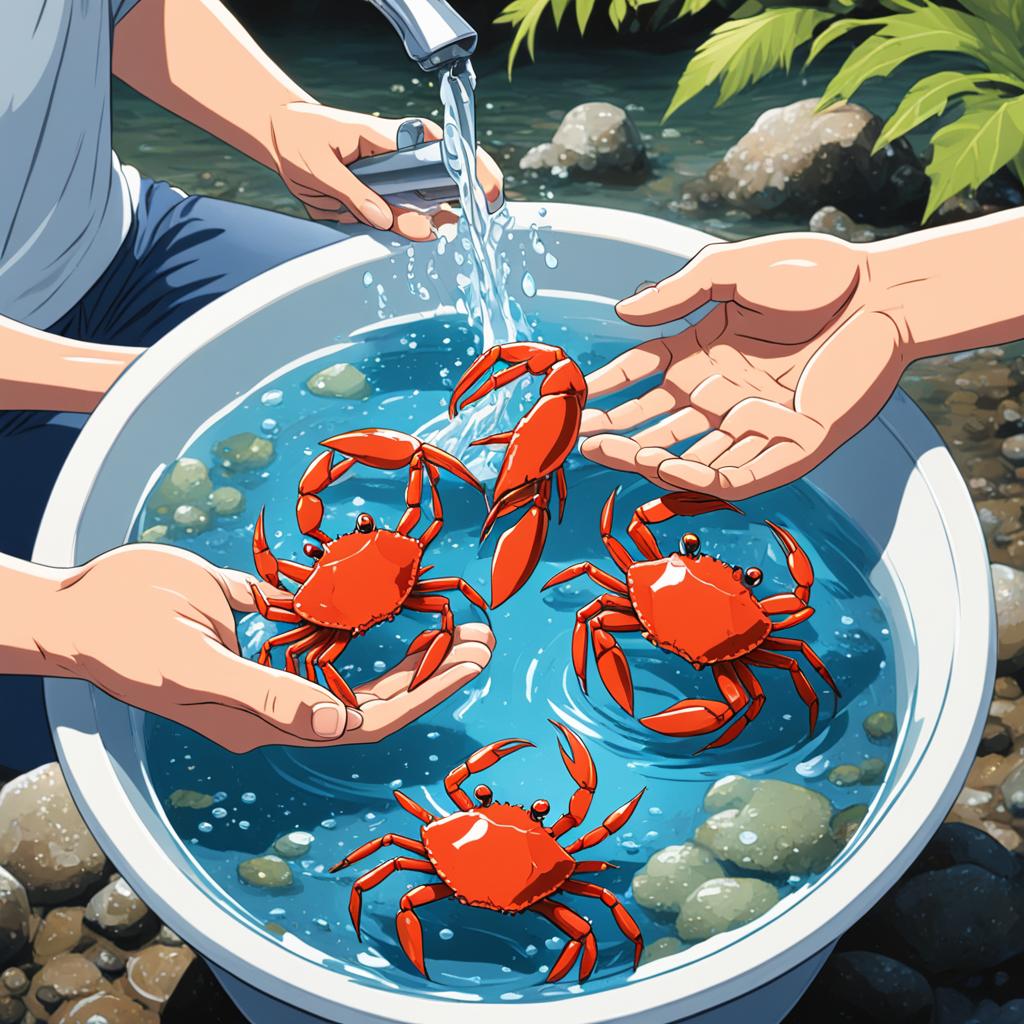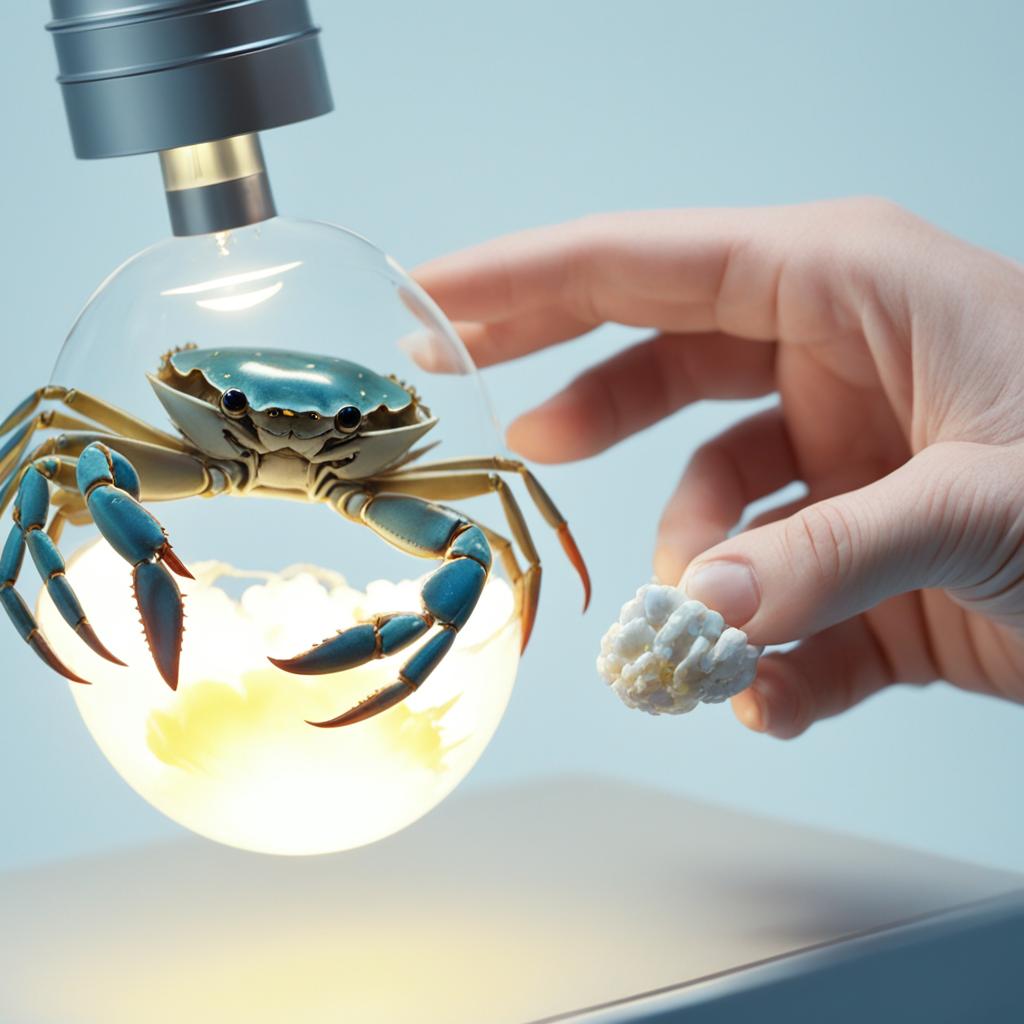Are you planning a trip and wondering how to transport live crabs without compromising their freshness and well-being? Finding the right packing method is crucial to ensure that the crabs arrive at their destination in the best possible condition. From inspecting the crabs to cutting between their claws and packing them carefully, every step plays a significant role in preserving the quality of the seafood.
In this article, we will guide you through the essential steps for safely packing live crabs for travel. Discover the secrets of transporting seafood in a way that keeps the crabs alive and maintains their delicious taste. Let’s uncover the best practices for a successful journey for you and your live crabs.
Inspecting the Crabs
Before packing live crabs for travel, it’s essential to inspect them for any damaged or soft shells. Crabs with cracked or broken shells are weaker and less likely to survive transport. To check for soft shells, lightly push on the top of their shells and ensure there are no areas that feel soft to the touch.
Discarding any crabs with damaged or soft shells is advisable, as they are more prone to injury and stress during the journey. Ensuring that only crabs with healthy and intact shells are packed will help maintain their well-being and increase their chances of surviving the trip.
When inspecting the crabs, pay close attention to any visible signs of damage or weakness. This can include cracks, breaks, or soft spots on the shells. These indicators can help determine the overall condition and viability of the crabs during transportation.
Cutting between the Claws

One crucial step in packing live crabs for travel is cutting between their claws to prevent pinching and potential harm during transit. To ensure their safety and the safety of those handling them, it’s important to follow the correct procedure. Here’s how:
- First, gather a sharp knife for the task. A sharp knife is essential for a clean and precise cut.
- Hold the crab firmly but gently to prevent any unnecessary stress or injury.
- Locate the joint between the crab’s claw sections. This is where you’ll make the cut.
- Using the sharp knife, make a cut of about 1⁄2 inch downward toward the middle of each claw. This process, known as cutting or nicking the claws, hinders the crabs’ ability to use their claws effectively.
- Be cautious and ensure that the knife does not slip or cause any harm to yourself or the crab.
Note: It’s recommended to wear rubber gloves while cutting between the claws to avoid getting pinched, and to maintain proper hygiene and safety precautions throughout the process.
Cutting between the claws significantly reduces the risk of pinching and potential injury during transport. This step helps ensure the well-being of the crabs and those handling them, allowing for a safer and smoother journey.
Rinsing and Tying the Crabs

After cutting between the crabs’ claws, it is important to rinse the crabs with salt water to prevent bleeding during transport. The salt water helps clot any bleeding areas and keeps the crabs alive. Place the crabs in a tank or livewell filled with cold salt water until the bleeding stops. It is crucial to keep the crabs in the water until ready to tie and pack, as this increases their chances of survival during the trip.
To prevent movement, tie the claws against the crabs’ bodies using twine. This ensures that the claws press against the front of the crab’s body and remain secure during travel.
Remember, rinsing the crabs with salt water and tying their claws are important steps to ensure their safety and minimize stress during transportation. By following these procedures, you can maintain the freshness and quality of the crabs, ensuring a delightful seafood experience at your destination.
Packing the Crabs for Travel
When it comes to packing live crabs for travel, it’s crucial to ensure they remain cool, protected, and alive during transportation. One effective method is to use a foam cooler with holes for airflow. Start by making three to four holes on each side of the cooler for proper ventilation.
To maintain a consistent temperature throughout the journey, line the bottom of the cooler with gel freezer packs or cooling blocks. These will help keep the crabs at the optimal temperature and preserve their freshness. It’s essential to place the crabs inside the cooler with their backs facing up, making sure they are not stacked on top of each other.
Remember to leave the cooler lid slightly ajar to allow for proper airflow. This will help prevent the crabs from suffocating and ensure they have enough oxygen during the trip. By following these packing guidelines and using a foam cooler with gel freezer packs, you can successfully pack live crabs for travel and ensure they arrive in the best possible condition.
FAQ
Q: How do you pack live crabs for travel?
A: To pack live crabs for travel, follow these steps: inspect the crabs for damaged or soft shells, cut between the claws to prevent pinching, rinse the crabs with salt water, tie the claws to prevent movement, and pack them in a foam cooler with gel freezer packs.
Q: How should I inspect the crabs?
A: When inspecting the crabs, look for any damaged or soft shells. Crabs with cracked or broken shells are weaker and less likely to survive transport. To check for soft shells, lightly push on the top of their shells and ensure there are no areas that feel soft to the touch. It’s best to discard any crabs with damaged or soft shells.
Q: How do I cut between the claws?
A: Use a sharp knife to make a cut of about 1⁄2 inch downward toward the middle of each claw. This process, known as cutting or nicking the claws, hinders the crabs’ ability to use their claws effectively and reduces the risk of injury during transport. It is advisable to wear rubber gloves while cutting between the claws to avoid getting pinched.
Q: Should I rinse the crabs with salt water?
A: Yes, after cutting between the claws, rinse the crabs with salt water. This prevents bleeding during transport. Place the crabs in a tank or livewell filled with cold salt water until the bleeding stops. Keeping them in the water until ready to tie and pack increases their chances of survival during the trip.
Q: How do I tie the claws and prevent movement?
A: Tie the claws against the crabs’ bodies using twine. This ensures that the claws press against the front of the crab’s body and remain secure during travel. Tying the claws prevents movement and makes it easier to pack the crabs.
Q: How should I pack the crabs for travel?
A: Use a foam cooler with holes for airflow. Make three to four holes on each side of the cooler for ventilation. Line the bottom of the cooler with gel freezer packs to maintain a consistent temperature. Place the crabs with their backs facing up inside the cooler, making sure they are not stacked on top of each other. Leave the cooler lid slightly ajar to allow for proper airflow. This method ensures the crabs stay cool, protected, and alive during transportation.
